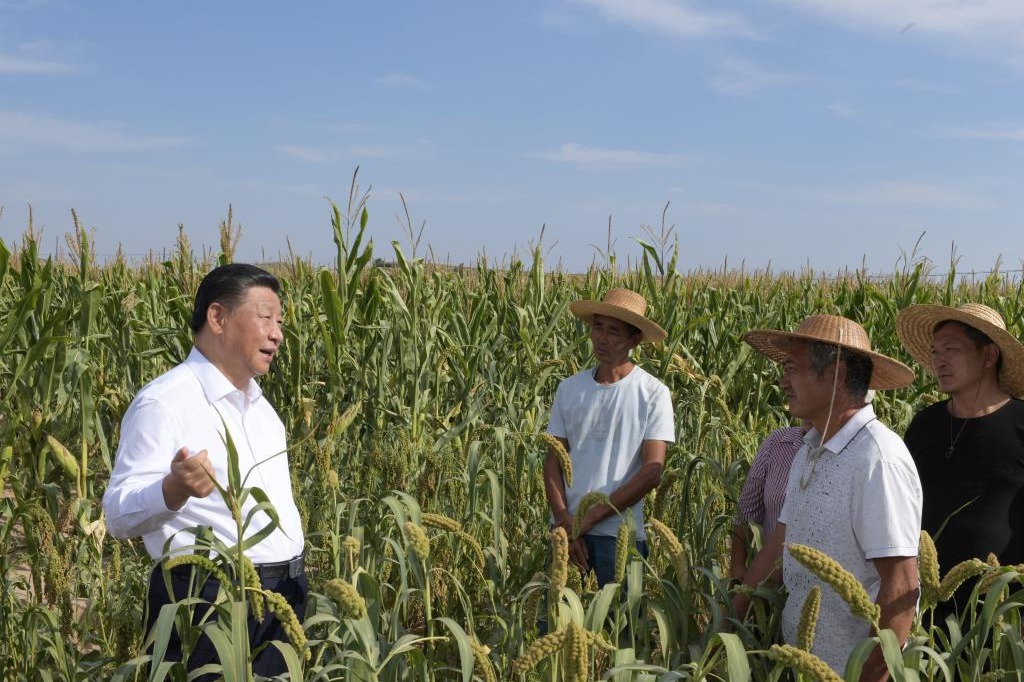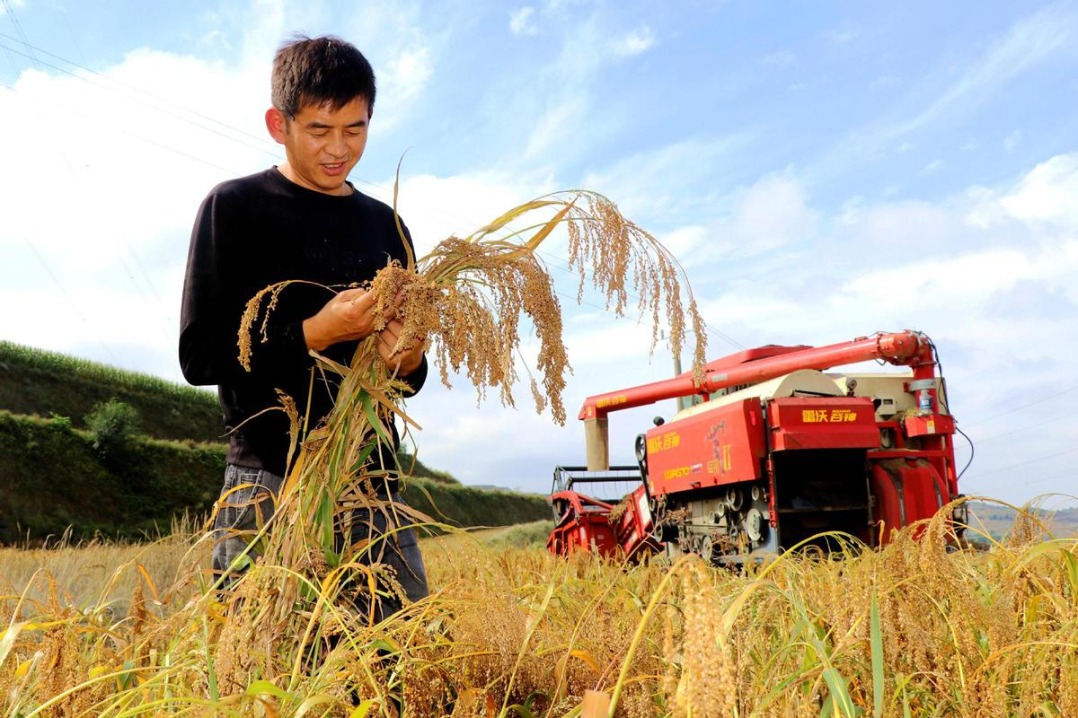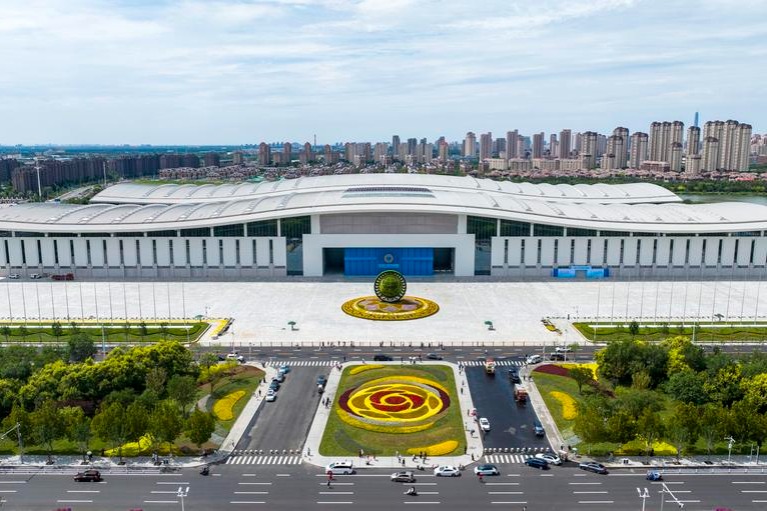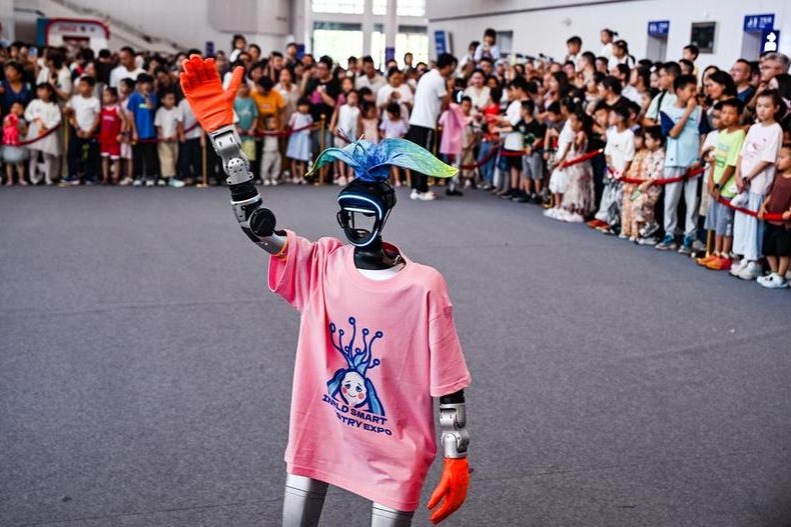BRICS can help safeguard global food security


With BRICS expanding its membership, the grouping will likely play a bigger role in reshaping the global development landscape and amplifying the voice of the Global South in international affairs.
After the historic expansion, the BRICS member states account for more than 46 percent of the world's population and 35 percent of the global economic output, much more than the G7 countries (the United States, Germany, Japan, France, the United Kingdom, Italy and Canada), whose combined population makes up only 10 percent of the world's total and GDP just 30 percent.
Unlike some Western alliances based on ideology and Western centered values, BRICS prioritizes development and security of the people while aiming to increase the Global South's representation in international decision-making process and to promote inclusive multilateralism. BRICS has become more attractive to countries from the Global South, and its gradual expansion will definitely enhance its agenda-setting capability in global affairs.
Global food insecurity has been worsening in the last few years due to the multiple crises such as the COVID-19 pandemic, wars and conflicts as well as climate change, and so on. The rise of trade protectionism, politicization and weaponization of food issues has made the situation worse due to the geopolitical tensions between major players in the international food market.
According to the 2023 Global Trade Alert, state interventions in trade activities have increased dramatically in recent years, with protectionist measures becoming rampant. The developed countries have been quick to use trade as a weapon, imposing sanctions that, as evident from the Global Sanctions Database, have impacted 80 percent of global industries, with agriculture being one of the hardest hit sectors.
BRICS members sharing common concerns and institutions, can play a major role in alleviating the global food crisis and ensuring food and nutrition security in the Global South through breaking down geopolitical barriers in food trade, reshaping the global food trade landscape and reforming global agricultural governance mechanisms. And with good mechanism, BRICS can lead the way in improving global food governance, boosting global food production, stabilizing supply chains and food prices, and safeguarding food security worldwide.
First, the strong capacity in both production and consumption of agricultural products of BRICS ensures its own contribution to member states' food security through smooth agricultural trade among its members. The current BRICS members account for 42 percent of global food production and 40 percent of consumption, providing a solid foundation for ensuring food security within its ranks.
Common efforts given by BRICS countries in investing in agricultural infrastructure, sharing development experiences, advancing technological exchanges and maintaining open agricultural trade can dismantle the monopoly of food exports and safeguard BRICS' collective food security and promote the long-term development of their agriculture sectors.
For instance, during the early stages of the trade war launched by the US, Brazil's soybean exports to China surged eightfold, while the US' cropland shrank by 6 million hectares. This cooperation between China and Brazil effectively ended the US' dominance in the global soybean market.
Second, the growing agricultural export capacity of BRICS members will enable the grouping to play an even greater constructive role in global food security. According to UN Comtrade Database, the G7 and BRICS together account for half of global agricultural exports. In 2021, the G7 contributed 28 percent to global agricultural exports, while BRICS(including the members admitted in January this year) contributed nearly 20 percent.
More importantly, over the past decade, the global share of food exports from the G7 and the European Union has declined from 30 percent in 2011 to 28 percent at present, while the share of BRICS countries in global agricultural exports has increased by 1 percent.
More importantly, BRICS members have an advantage in terms of exporting staple crops, accounting for 39 percent of global rice exports, 33 percent of wheat exports and 23 percent of corn exports. The unimpeded trade of these essential crops can significantly reduce food insecurity in the Global South. India is a major rice exporter, Russia and Brazil are among the largest wheat exporters and corn exporters separately, with the primary destinations for these staples being Global South countries.
Third, BRICS' commitment to agricultural cooperation has laid a solid foundation for its further contribution to global food security. At the 2017 BRICS Summit in Xiamen, Fujian province, the grouping launched the "Action Plan 2017-2020 for Agricultural Cooperation of BRICS Countries", which was extended to 2024.
The plan identifies specific areas of cooperation, including improving global water resource efficiency in agriculture, eradicating poverty and hunger, improving food security policies, and sharing best practices. The goal is to implement inclusive policies and attract investment to first ensure intra-BRICS food security, and then, through expanded South-South cooperation, contribute to global efforts to eradicate poverty and hunger.
And fourth, as the largest economy in BRICS and a major food producer and consumer, China can play a leading role in the grouping's food security initiatives. With 70 percent of BRICS' GDP, China's agriculture sector and advanced farming practices can contribute significantly to stabilizing global food prices, boosting food production of Global South countries, and promoting sustainable development in the global food value chain.
China, the world's largest food producer, has continuously improved its agricultural infrastructure, increased technological inputs, and adjusted its industrial structure to maintain stable food production. China's per capita grain output exceeds the global average. As living standards in China rise, so does the demand for animal feed, with over half of the world's food exports flowing into China. As the largest importer of food products, China plays a key role in stabilizing global food supply.
With the BRICS members, as well as the rest of Global South countries, better safeguarding their own food security, the global food governance framework will become more robust, and help safeguard global food security.
As major regional powers, BRICS members not only represent their own countries but also have significant influence in their respective region. The role of BRICS in addressing geopolitical crises and helping reshape the global order will be further increased with the perfection of its mechanism through dialogue and cooperation.
Faced with global food security challenges, BRICS should launch a food security initiative, while engaging in practical cooperation on infrastructure, technology and policy coordination with member countries. By maintaining a resilient food supply chain and stabilizing global food prices, BRICS can break the monopoly in international food markets and make meaningful contributions to global food security.
The views don't necessarily represent those of China Daily.
The author is a professor at the College of Humanities and Development Studies, China Agricultural University.
If you have a specific expertise, or would like to share your thought about our stories, then send us your writings at opinion@chinadaily.com.cn, and comment@chinadaily.com.cn.


































